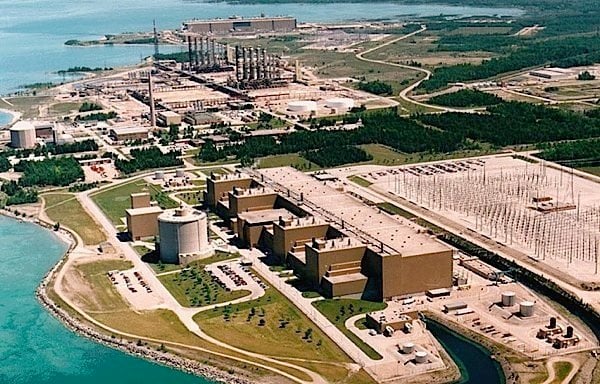Bruce Power, the privately owned company that provides roughly 30 per cent of Ontario’s electricity from its array of eight CANDU reactors, will invest $13 billion to refurbish six of them. The company will assume all financial risk arising from potential cost overruns. The project will begin in 2020 and will extend the operating life of the plant to 2064. The refurbishment had been scheduled to begin in 2016, but is being delayed to maximize the life of the existing reactors. The delay, according to the government of Ontario, will save $1.7 billion for electricity customers.
According to the government, the work at Bruce Power will create up to 23.000 jobs and generate “about $6.3 billion” in annual economic benefits throughout the province. The contract is between Bruce Power and the Ontario Independent Electricity System Operator (IESO). Ownership of Bruce Power is evenly divided between the Ontario Municipal Employees Retirement System (OMERS) and TransCanada Corporation, each of which holds a 48.5 per cent interest in the company. The remaining 3 per cent is owned by the Power Workers’ Union and the Society of Energy Professionals.
The agreement between Bruce Power and IESO is being called good news for Ontario’s manufacturing sector. The vice president of the Ontario division of Canadian Manufacturers and Exporters (CME), Ian Howcroft, said the agreement will provide “significant opportunities” for Ontario-based manufacturers. The CME’s estimation of the economic benefits expected to flow from the work at Bruce Power includes 18,000 direct and 3,000–5,000 indirect jobs annually, plus up to $5.2 billion in spending on equipment, supplies, materials and labour. Over 90 per cent of the spending will be in Ontario, and the company’s supply chain supports hundreds of businesses, CME says. “This is an agreement that will not only lead to jobs and economic activity but affordable electricity that will provide price stability to our energy systeme for decades to come,” Howcroft said.
On November 24, the Ontario government released a Climate Change Strategy in advance of the COP21 international meeting in Paris. It includes a commitment to carbon-free electricity, most of which comes from nuclear generation. It its own statement, Bruce Power says it is the largest source of clean energy in the province. It is also the world’s largest nuclear facility. As of 2012, only 9 per cent of Ontario’s emissions came from the electricity sector.
































